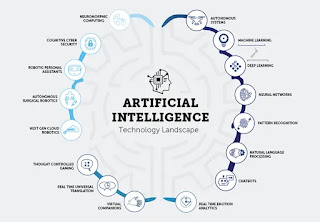If you are interested in artificial intelligence and image generation, you might have heard of two popular tools that can create realistic images from text descriptions:
I will compare and contrast these two AI image generators and explain how they work and what they can do.
I-JEPA stands for Image Joint Embedding and Prediction Algorithm, and it is a new AI model developed by Meta, the parent company of Facebook.
- I-JEPA uses a large-scale dataset of images and captions to learn how to complete or generate images. Unlike other models that rely on pixel-level comparisons, I-JEPA compares abstract representations of images, which allows it to capture common-sense knowledge about the world and avoid common errors such as extra fingers or missing limbs.
- I-JEPA is also very efficient and can achieve state-of-the-art performance on multiple computer vision tasks with less data and computation than other methods. Meta has open-sourced the code and model checkpoints of I-JEPA for researchers to use and improve.
- Midjourney is another AI image generator that is popular online and runs on Discord.
- It was created by David Holz, a former co-founder of Leap Motion, a company that developed hand-tracking technology for virtual reality.
- It uses a technique called stable diffusion, which is a way of gradually transforming noise into an image that matches a given text prompt.
- It can produce high-quality images with diverse styles and details, such as the Gothic model, which produces dark and surreal images. It offers a subscription plan for users who want to access more features and models.
Both I-JEPA and Midjourney are examples of generative adversarial networks (GANs), which are AI models that consist of two competing neural networks: one that creates images and one that evaluates them. GANs are powerful tools for generating realistic and creative images, but they also pose challenges such as mode collapse, instability, and ethical issues. Therefore, it is important to use them responsibly and with caution.
I-JEPA and Midjourney are two impressive AI image generators that use different techniques and datasets to create realistic images from text descriptions. They both have their strengths and limitations, and they both demonstrate the potential and challenges of generative AI. If you want to try them out yourself, you can visit their websites or join their Discord servers.
What is I-JEPA?
I-JEPA stands for Image Joint Embedding Predictive Architecture. It is a non-generative approach for self-supervised learning from images. It was introduced by Meta's Chief AI Scientist Yann LeCun and his team in a paper presented at CVPR 2023. The idea behind I-JEPA is simple: from a single context block, predict the representations of various target blocks in the same image. The context encoder is a Vision Transformer (ViT) that only processes the visible context patches. The target encoder is another ViT that processes all the patches in the image. The model then tries to minimize the distance between the context and target representations using a contrastive loss function.
The main advantage of I-JEPA :
- It learns by creating an internal model of the outside world, which compares abstract representations of images rather than comparing the pixels themselves.
- This allows it to capture common-sense knowledge about the world and avoid some of the biases and issues associated with other methods such as invariance-based pretraining.
- I-JEPA also delivers strong performance on multiple computer vision tasks, such as low-shot classification, object detection, segmentation, and image retrieval.
- Moreover, it is much more computationally efficient than other widely used computer vision models, such as ResNet or EfficientNet.
- The representations learned by I-JEPA can also be used for many different applications without needing extensive fine-tuning.
The main disadvantage of I-JEPA:
- It can only predict representations of existing images or parts of them. Therefore, it is not suitable for creative tasks such as image synthesis, style transfer, or text-to-image generation.
- Another limitation of I-JEPA is that it only works with images and does not handle other modalities such as text or audio. Therefore, it cannot perform tasks such as multimodal alignment, captioning, or question answering.
What is Midjourney?
Midjourney is an independent research lab that explores new mediums of thought and expands the imaginative powers of the human species. It was founded by David Holz, who previously founded Leap Motion, a company that developed a motion-sensing technology for VR and AR. Midjourney has 11 full-time staff and an incredible set of advisors, including Jim Keller, Nat Friedman, Philip Rosedale, and Bill Warner. Midjourney runs entirely from a Discord server, where users can interact with its AI models using text commands.
The main advantage of Midjourney:
- It uses a large-scale transformer model trained on a massive dataset of images scraped from the web. It can generate high-quality images with realistic details and diverse styles.
- It can also handle complex prompts that involve multiple objects, attributes, actions, or emotions. For example, one can ask Midjourney to generate an image of "a happy astronaut on a horse" or "a sad dragon in a forest" and get impressive results.
- Midjourney also supports various parameters and commands that allow users to adjust the tone, length, format, resolution, and diversity of the generated images.
The main disadvantage of Midjourney :
- The basic plan costs $9 per month and allows users to generate up to 100 images per day at 512 x 512 resolution.
- The premium plan costs $29 per month and allows users to generate up to 500 images per day at 1024 x 1024 resolution. The enterprise plan costs $99 per month and allows users to generate up to 2000 images per day at 2048 x 2048 resolution.
- Users are responsible for complying with the terms of service and the applicable laws when using Midjourney.
- Another limitation of Midjourney is that it only works with text and images and does not handle other modalities such as audio or video.
Tags
AI

